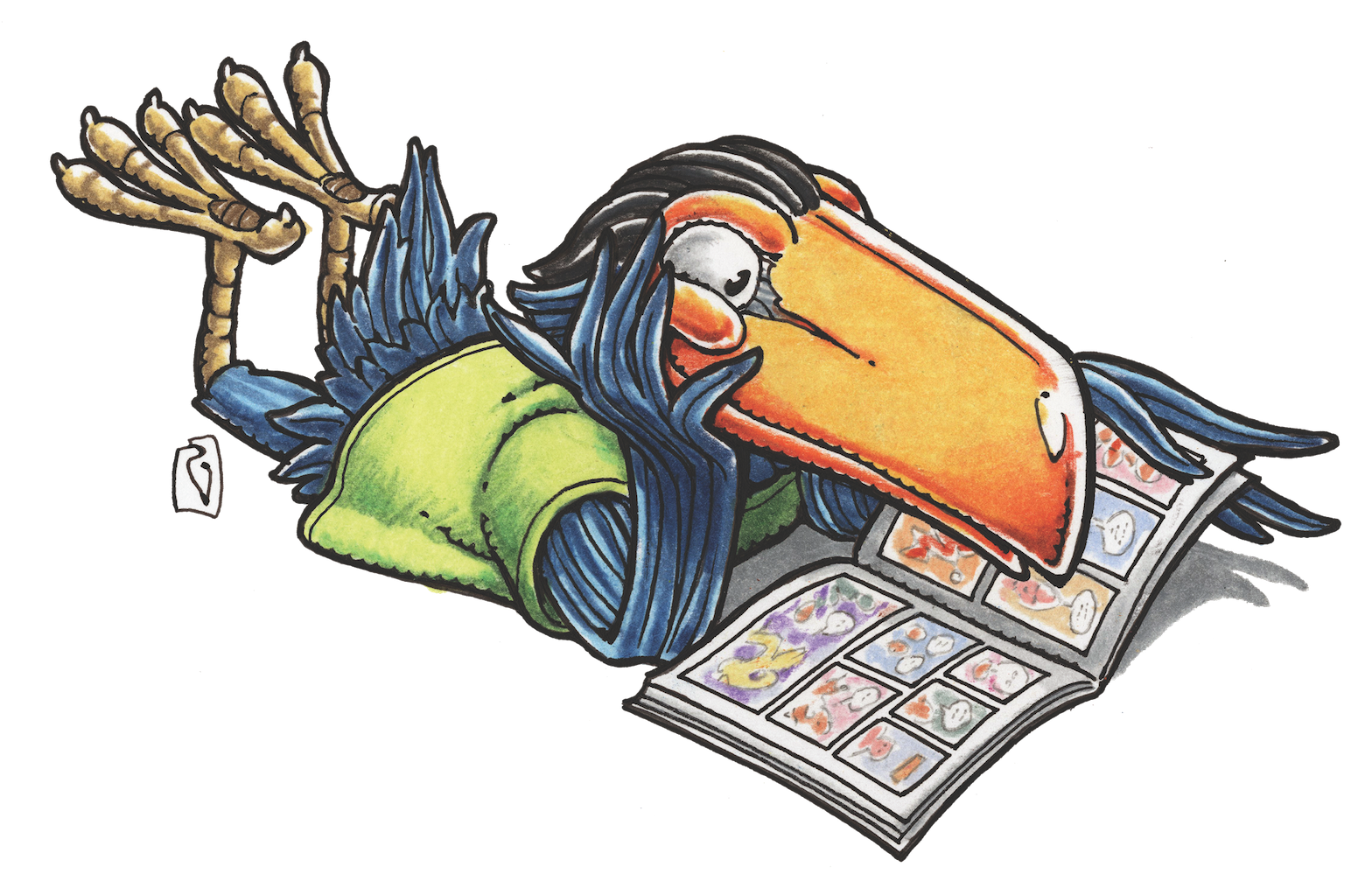STEVE LIEBER’S DILETTANTE
Dilettante 050: Tips on Writing Your First Comic


Learning to write prose is insanely difficult, and for many it takes years of struggle to grasp the basics. You have to understand construction, character, theme, pacing, the effects of word choice, the specifics of your subject and so much more. Learning to write a collaborative form like comics just adds new troubles and traps as you run into the difficulties inherent in the medium, or specific to the people you’re working with.
I’ve been the first collaborator for a number of writers on their first comic, and it’s generally gone pretty well. (I’ll brag here: One story got an Eisner Award nomination, another earned four, and another made it into a Year’s Best anthology and helped the writer land a movie deal.) And I’ve also watched as artists I know worked with first-time writers on collaborations that didn’t turn out too well. So I thought I’d share some observations and suggestions that might be useful to writers who are new to the medium.
1. Read a bunch of comics.
This is primary. You’re telling a story in a complicated medium with its own rules and rhythms and quirks. At the very least, you should have a sense for what other people have done with it. It helps to read triumphs, near-successes and outright failures. Read well beyond the genre you intend to write. There are valuable lessons everywhere. (I’ve noted before that one of the biggest influences on the adult crime comic I draw is John Stanley’s Little Lulu.)
There’s no established comics canon yet, but you can find plenty of best-of and must-read lists online. Librarians and comic shop owners will have plenty of suggestions, too.
Read analytically. Look at what works and what doesn’t and try to take the successes apart to see how they function. Here’s an example of such an analysis: https://www.comic-con.org/toucan/dilettante-015-analyzing-eisner
2. Ask yourself: Why is this story a comic?
I’ve run into so many writers with an unsold screenplay who have decided that they could just “turn it into a comic.” They’re generally unaware of the contempt they’re communicating for both their own work and for the medium they expect to work in. It’s painfully obvious when someone is treating a comic as a movie pitch, or trying to shoehorn filmic action and dialogue into panels. Respect for a medium means building your story around things the medium can do well.
3. If you aren’t working with an established publisher, finding an artist will be tough.
The most common question I hear from first time writers is “How do I find an artist?” The easiest answer is money. If you can pay a competitive rate, you can always hire a skilled artist to be your collaborator. This isn’t cheap. If you’ve established yourself in some other medium, your clout from that can help you find someone who wants to work with you. If you don’t have money, or a rep from outside comics, you’ll need to network like crazy, in person and online, using every means available to make connections with artists, or people who could introduce you to artists. It will be slow and difficult.
4. It’s better to know your artist.
Don’t let not having an artist stop you from writing scripts. You’ll learn a lot from writing one even if no one ever draws it. But all things being equal, it’s better to write a script with a specific artist in mind.
Many artists are good at some things and terrible at others. Look at their work and talk to them before you hand over a script. If an artist only has the facility to draw one consistent face and relies on hair and clothing to differentiate his characters, he might not be a good pick for your boot camp melodrama where everyone is shaved bald and wearing the same uniform. Play to their strengths and interests, and avoid their weaknesses.
5. Write visually.
Always look for ways to make your point with pictures rather than words. Every panel in the story should have a reason for being there, and be more than just the pictorial equivalent of “he said” or “she said.” Ask yourself: What new information does this picture tell the reader? Does the visual information I’m asking the artist to draw advance the story or enrich the characters in a meaningful way? If not, why is that panel there?
Writing visually doesn’t necessarily mean telling the artist where to put the “camera” to show a scene. It’s rare for a new writer to have a good sense of how to do that, and it’s impossible to anticipate the many choices that an artist will need to make when drawing a page. Individual results may vary, but most artists I’ve spoken to over the years will cross out the parts of scripts that micromanage camera and staging. When in doubt, tell your artist what needs to happen in a panel and what it should feel like.
Speaking for myself, I want to know what the reader needs to learn from each panel, and if it’s unclear, why they need to know it. For instance, if you specify that a baby is reaching for a star- shaped toy, maybe let me know it’s there because that star shape is a motif that’ll be evoked later when she’s older and places a star atop the Christmas tree, and not just because that’s the first shape you thought of.
In cases like that, it’s helpful to emphasize the important details, like so:
Panel 1: Baby Josie, looking very serious, reaches past a pile of alphabet blocks and plastic bunnies to grasp a STAR-SHAPED TOY.
Avoid putting story points in dialogue or captions that are already communicated by the pictures, unless you don’t trust the pictures to communicate those points effectively. It’s better to use your words to say things that the pictures don’t, or can’t.
6. One action per character per panel.
I can’t stress this one enough. It’s particularly common in scripts adapted from screenplays. I can draw a panel in which Dan brushes his teeth. I can draw a panel in which Dan gets into bed. I cannot draw a panel in which Dan brushes his teeth and gets into bed.
7. Pay attention to the format.
If your story is going to run in black and white, don’t write plot points that require color. If the comic is going to run in a digest-sized magazine, be aware that your artist won’t have as much space to draw, that the pictures may need to be simpler to read clearly, and you may need to write fewer panels per page. If you’re writing for a website that delivers stories one panel at a time as the reader scrolls down on their phone, that’s a unique rhythm that will read very differently than a comic that puts multiple panels of differing sizes next to each other on the same sheet of paper.
8. Physical space is almost always at a premium.
The more words there are on a page, the less room there is for the picture. Try to whittle down your captions and dialogue so they never take up more than a third of a typical panel. Cultivate brevity.
9. Always have a reason for the choices you make in your script.
If the answer is “because it’s a comic,” watch out. This is fine if that means you’re paying attention to the mechanics of the medium. An example of this might be keeping speaking order consistent throughout a scene so that the artist can maintain left-right relationships without violating the 180 degree rule. But “because it’s a comic” should never mean deploying clichés you remember from the reading you did as a kid. Those were probably shopworn when you first saw them, and trotting them out now can leave your audience feeling condescended to.
10. First collaboration? Keep it short.
If you’ve got a big story in mind, it’s tempting to dive right in and start telling it. This is usually a mistake. You’re going to get a lot better as you work at this, and if your collaborator is new at this, so is she. 50 pages from now, you’ll be a much better storyteller. After 100, you’ll be better still. Why shackle your later, more skillful efforts to your early amateur fumblings? Start off with something short. Maybe an 8-pager? Your collaborator is much more likely to finish drawing a short story than a long one, and you’ll both learn from the experience. You’ll get a sense what it’s like to work with each other, and find how well your approaches and sensibilities mesh.
Are you a writer getting started in comics, or an artist who has worked with one? I’d love to hear your thoughts on this! Tell me about them on Twitter at @steve_lieber, or on Facebook at https://www.facebook.com/steve.lieber
Steve Lieber’s Dilletante appears the second Tuesday of every month here on Toucan!